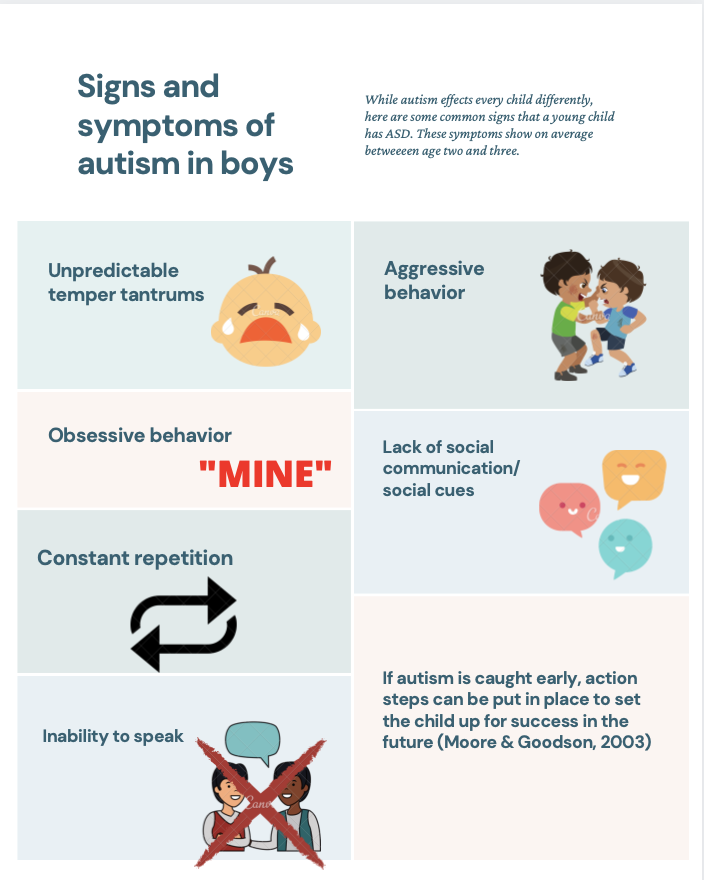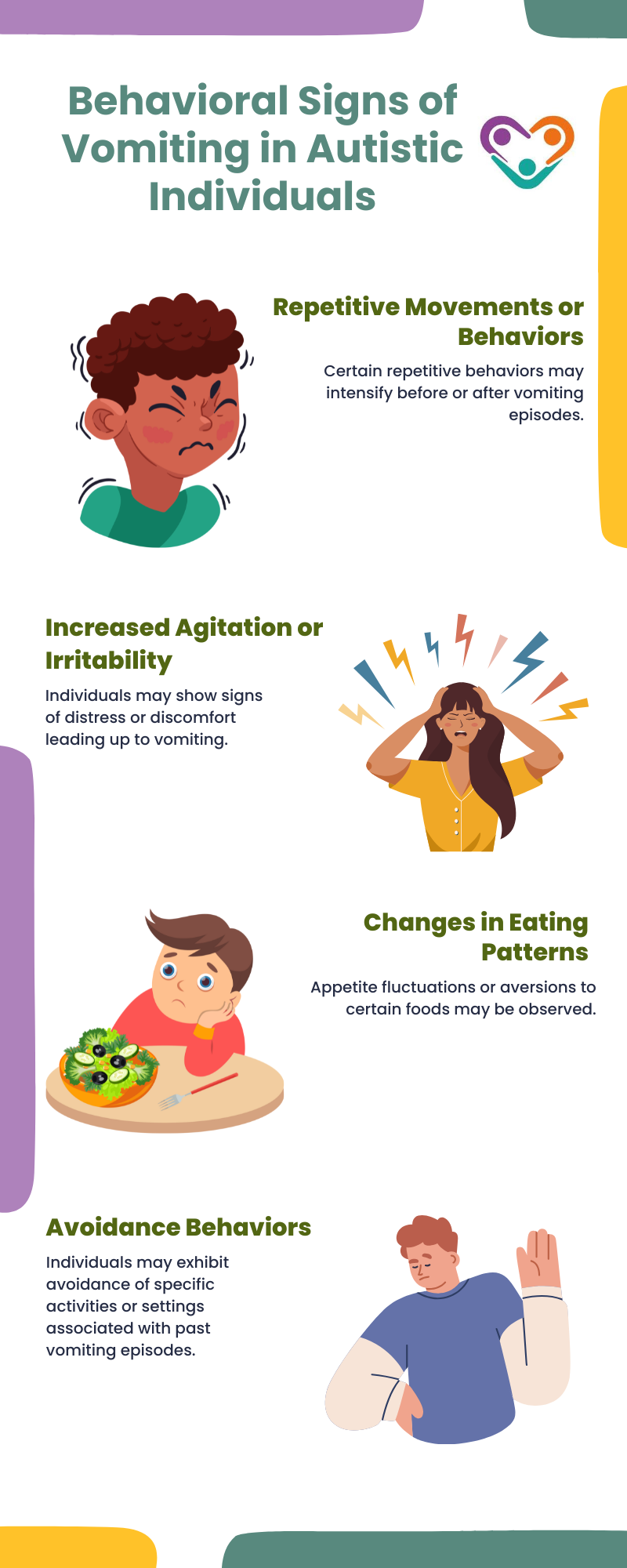What makes an effective Autism Behavioral Therapy method
What makes an effective Autism Behavioral Therapy method
Blog Article
Comprehending the Impact of Behavioral Autism on Day-to-day Live and Social Communications
You may not understand exactly how deeply behavioral autism impacts everyday life and social interactions. People on the range often browse a globe loaded with interaction hurdles and sensory overload. These challenges can lead to irritation and seclusion, affecting their connections and general health.
Specifying Behavioral Autism and Its Characteristics
Behavior autism, frequently described as autism range problem (ASD), encompasses a variety of problems defined by obstacles in social interaction, communication, and repetitive behaviors. You might observe that individuals with ASD often struggle to analyze social cues, which can cause misconceptions in discussions. They may locate it tough to develop eye contact or take part in small talk, making social scenarios feel frustrating.
Communication troubles can manifest in numerous means, from delayed speech growth to a preference for using fewer words. By acknowledging these traits, you can foster an atmosphere that promotes approval and motivates effective interaction, assisting individuals with autism grow in their day-to-day communications.
The Range of Autism: Recognizing Irregularity in Behavior
Autism spectrum problem (ASD) isn't a one-size-fits-all diagnosis; it differs commonly amongst people. You might encounter individuals that are very spoken and involve conveniently in conversations, while others could prefer singular tasks or communicate non-verbally.
Additionally, the method individuals with ASD react to sensory input can differ greatly; some may be bewildered by loud sounds or bright lights, whereas others grow in stimulating atmospheres. The range additionally consists of distinctions in social interactions; some individuals may have a hard time to translate social cues, while others navigate social settings with loved one simplicity. Comprehending this variability is necessary, as it helps you appreciate each individual's distinct experience and dressmaker assistance to their certain demands, fostering an extra inclusive atmosphere for everybody.
Interaction Obstacles Faced by Individuals With Autism
When you connect with individuals on the autism range, you might observe their distinct interaction obstacles. They frequently encounter troubles with both verbal and nonverbal cues, which can influence their social communications. Comprehending these barriers is essential for fostering better links and support.

Verbal Communication Difficulties
Lots of people on the autism range experience verbal communication difficulties that can significantly influence their daily communications. You could locate it challenging to express your thoughts, feelings, or requires plainly. This can lead to stress for both you and those around you, as misconceptions happen. You might battle with initiating conversations, maintaining a topic, or recognizing subtleties in speech. Frequently, you could prefer making use of easy language or recurring expressions, which can limit your capability to engage in deeper discussions. Your volume, tone, or rate might not straighten with social expectations, creating others to misinterpret your intents. Identifying these challenges can aid you and your support network establish strategies to improve communication and foster far better links with others in your daily life.
Nonverbal Communication Barriers
Verbal interaction isn't the only challenge people on the autism spectrum face; nonverbal interaction obstacles can be equally as substantial. You could discover it tough to interpret body language, face expressions, and eye call, which are crucial for efficient interaction. These challenges can lead to misconceptions or false impressions of social hints, making communications feel frustrating or complicated. You might have a hard time to express your own emotions with nonverbal ways, leaving others unsure of your sensations or purposes. This disconnect can create feelings of isolation and disappointment. Recognizing these barriers is critical for cultivating understanding and empathy in your communications. By dealing with nonverbal interaction, you can locate methods to enhance your social experiences and boost your overall top quality of life.
Social Interaction Influences
Social interactions can usually really feel overwhelming due to the special interaction challenges dealt with by individuals with autism. You may have problem with analyzing social signs, making it hard to understand sarcasm or body language. This can cause misconceptions or uncomfortable moments in discussions. In addition, launching and keeping discussions might feel difficult, triggering anxiousness in social circumstances. You may like structured atmospheres, making spontaneous interactions unpleasant. It's also common to experience difficulty in engaging in small talk, which can impede developing brand-new friendships. Acknowledging these difficulties can assist you discover techniques to enhance interaction, such as practicing social abilities in risk-free settings or utilizing aesthetic aids - Autism Therapist. Understanding your requirements allows you to navigate social interactions with better confidence and simplicity.
Social Communication and Relationship Structure in Autism
While building connections can be testing for people with autism, recognizing their unique point of views and communication designs can cultivate meaningful links. You could observe that many individuals on the range prefer direct interaction and may battle with social cues or little talk. By being straightforward in your interactions, you click to read more can assist create an environment where they feel comfy.
Involving in shared passions can also serve as a bridge to deeper links. Whether it's a leisure activity, a preferred show, or a common interest, these usual threads can open up doors to relationship.
Every Day Life Routine: Navigating Approaches and challenges
Steering everyday life routines can be specifically challenging for people with autism, particularly when unexpected adjustments happen. To browse these difficulties, think about implementing aesthetic schedules or lists.
Establishing a routine that includes sensory breaks can also be advantageous. This assists develop an understanding atmosphere.
Lastly, method mindfulness methods to manage tension and anxiousness. Simple breathing exercises or basing strategies can make a substantial distinction. By integrating these strategies, you can improve your everyday regimen and lessen disturbances, making life feel a lot more workable.
Toughness and Capacities of Individuals on the Autism Range
Understanding daily life routines is simply one facet of the autism experience. Several people on the autism range possess exceptional staminas and abilities that set them apart.
Moreover, your memory skills frequently shine, especially in locations of passion. Aba Therapist Near Me. This flair for maintaining info can make you an important resource in areas like art, modern technology, or science. You might additionally display strong aesthetic thinking, allowing you to picture complex principles and address issues artistically
In addition, your distinct perspective on the globe can foster compassion and understanding in others, enhancing social interactions. Welcoming these strengths not just increases your confidence yet also aids others appreciate the varied skills you bring to the table.
Developing Inclusive Environments for Individuals With Autism
Creating inclusive settings for individuals with autism starts with designing sensory-friendly areas that deal with their unique requirements. You can additionally promote opportunities for social interaction, helping to build relationships and connections. By making these changes, you'll contribute to a much more inviting atmosphere for everybody.
Creating Sensory-Friendly Spaces
While developing sensory-friendly rooms, it's vital to review you could try these out the unique needs of people with autism. Beginning by choosing soothing shades and soft lights to create a calming setting. When overwhelmed, incorporate quiet areas where individuals can pull away and charge. You'll intend to minimize loud sounds and distractions, making use of soundproof materials or white sound equipments to aid maintain tranquility. Think about responsive components like soft textiles or fidget-friendly things that can give comfort. Determine that spaces are versatile, enabling simple reformation to fit various tasks. Ultimately, consist of aesthetic routines or clear signage to assist individuals navigate the space confidently. By thoughtfully incorporating these aspects, you can create a welcoming environment that supports sensory requirements and promotes general wellness.
Advertising Social Interaction Opportunities
Designing sensory-friendly spaces not just addresses private comfort yet also sets the stage for significant social interactions among people with autism. To advertise these interactions, create inclusive environments that welcome engagement. Organize organized tasks, like art courses or group games, that motivate collaboration without frustrating sensory input. Use visual aids and clear communication to help every person engage conveniently. Urge peer mentoring, matching people with autism with helpful peers that can direct them via social circumstances. In addition, think about organizing routine area events that commemorate neurodiversity, fostering approval and understanding amongst all participants. By executing these techniques, you can improve social possibilities, aiding people with autism develop friendships and reinforce their social skills in a safe, inviting environment.

Frequently Asked Questions
Exactly How Can Buddies Assistance A Person With Behavioral Autism?
You can sustain a friend with behavioral autism by holding your horses, listening actively, and respecting their limits. Participate in activities they delight in, interact freely, and develop a comfy environment where they feel valued and comprehended.
What Resources Are Readily Available for Moms And Dads of Kid With Autism?
You can discover numerous sources for moms and dads of children with autism, consisting of assistance groups, educational internet sites, and neighborhood neighborhood services. Getting in touch with various other parents can also give important understandings and shared experiences to assist browse difficulties.
Can Behavioral Autism Change With Time?

Yes, behavior autism can change gradually. You might see shifts in interaction, social abilities, and habits as your youngster grows. Early treatment and support often play essential roles in these developing changes.
Just How Do Sensory Level Of Sensitivities Impact Every Day Life?
Sensory sensitivities can make day-to-day experiences overwhelming. You could battle with loud sounds or brilliant lights, bring about anxiety or avoidance. Discovering atmospheres that fit your requirements can significantly boost your comfort and overall daily life.
What Prevail Misconceptions Regarding Behavioral Autism?
You could assume behavioral autism only impacts interaction abilities, but it's more complicated. Lots of think people do not have compassion or knowledge, which isn't real. Understanding these false impressions aids foster acceptance and support for those on the spectrum.
Behavioral autism, commonly referred to as autism range condition (ASD), includes a variety of problems defined by difficulties in social communication, communication, and repeated behaviors.Social interactions can frequently feel overwhelming due to the unique communication obstacles dealt with by people with autism.Designing this article sensory-friendly spaces not only addresses private convenience but also sets the stage for significant social interactions amongst people with autism. Encourage peer mentoring, pairing individuals with autism with supportive peers who can lead them via social circumstances. By carrying out these approaches, you can enhance social chances, aiding people with autism build relationships and reinforce their social abilities in a secure, welcoming setting.
Report this page